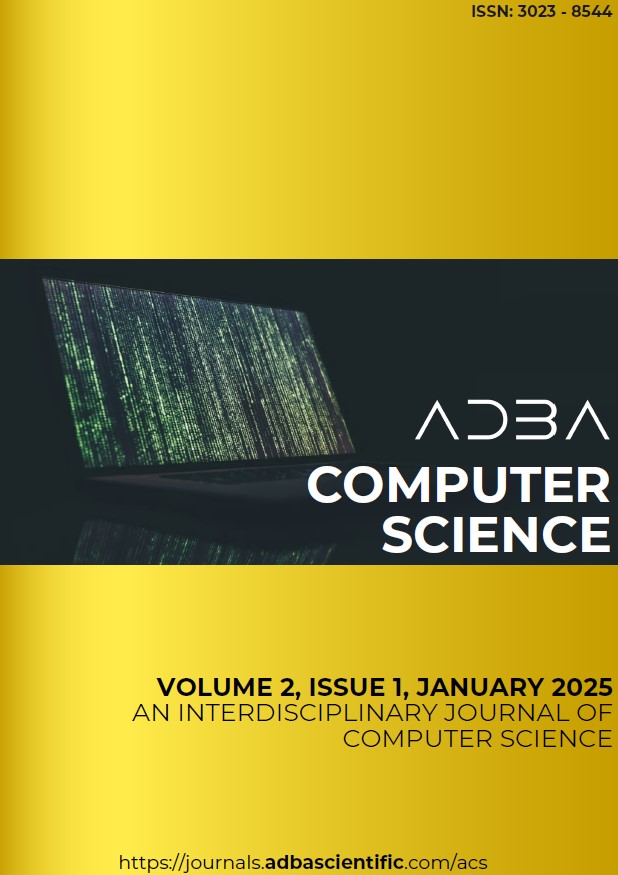Abstract
The increasing use of internet-based technologies and computer networks, which grow and develop daily, has brought problems. A new type of crime called cybercrime has emerged and is committed through computers. There are various research and studies on cyber crimes. This study presents a bibliometric analysis of studies on the keywords "Cyber Crimes", "Internet Crimes" and "Computer Crimes" indexed in Web of Science between 2000 and 2023. This study aims to reveal the scientific map of research and studies on cybercrimes, make sense of the data, understand the current situation, trends, and relationships in this field, and create a resource for future cybercrime studies. Bibliometric analyzes were performed using Bibliometrix and Microsoft Excel programs. A total of 2566 studies by 5590 different authors were determined to be used in the research. Jaishankar, K. was the most prolific writer with 21 articles. University College Dublin was the university with the most publications, with 56 articles. IEEE Access became the most-published journal with 151 articles. The most cited work is Stuxnet and the Future of Cyber Wars by Farwell, JP, and Rohozinski, R. Bibliometric analysis results such as most used keywords, including the most influential and productive countries, authors, universities and journals in the field of cybercrime are included. In studies on cybercrime, the relationships and collaborations between countries and authors are presented with visuals.
References
Borgman, A. and S. Furner, 2001 Scholarly communication and bibliometrics. Annual Review of Information Science and Technology 36.
C. Lu, W. J. and W. Chang, 2007 Trends in computer crime and cybercrime research during the period 1974-2006: A bibliometric approach. In Intelligence and Security Informatics, volume 4430 of Lecture Notes in Computer Science, pp. 244–250.
Cldy, 2023 Email spam statistics 2022 – find out more about spam emails. Accessed: Jan. 03, 2023.
Farwell, J. P. and R. Rohozinski, 2011 Stuxnet and the future of cyber war. Survival (London) 53: 23–40.
Goodman, M. D. and S. W. Brenner, 2002 The emerging consensus on criminal conduct in cyberspace. International Journal of Law and Information Technology 10: 139–223.
Ho, H. T. N. and H. T. Luong, 2022 Research trends in cybercrime victimization during 2010–2020: A bibliometric analysis. Springer International Publishing 2.
IBM, 2024 What is a cyberattack? | IBM. Accessed: Jan. 28, 2024.
K. Achuthan, R. K. S. R., V. K. Nair and R. Raman, 2023 Cyberbullying research — alignment to sustainable development and impact of COVID-19: Bibliometrics and science mapping analysis. Computers in Human Behavior 140: 107566.
K. Li, J. R. and E. Yan, 2018 Web of science use in published research and review papers 1997–2017: A selective, dynamic, cross-domain, content-based analysis. Scientometrics 115: 1–20.
K. Shaukat, V. V. I. A. H., S. Luo and M. Xu, 2020 A survey on machine learning techniques for cyber security in the last decade. IEEE Access 8: 222310–222354.
Kaleci, F., 2023 Ekonomi alanındaki ˙Inovasyon konulu uluslararası bilimsel yayınların bibliyometrik analizi.
Klimburg, A., 2018 National cyber security framework manual. Accessed: Apr. 12, 2023.
L. Wu, Q. P. and M. Lembke, 2023 Research trends in cybercrime and cybersecurity: A review based on Web of Science Core Collection Database. International Journal of Cybersecurity Intelligence and Cybercrime 6: 5–28.
Lallie, H. S., L. A. Shepherd, J. R. Nurse, A. Erola, G. Epiphaniou, et al., 2021 Cyber security in the age of COVID-19: A timeline and analysis of cyber-crime and cyber-attacks during the pandemic. Computers & Security.
M. M. Alashqar, A. B. A. R. and A. S. B. A. Aziz, 2021 Examining the trend of research on chemometric analysis: A bibliometric review. Accessed: Apr. 12, 2023.
M. Weir, B. D. M., S. Aggarwal and B. Glodek, 2009 Password cracking using probabilistic context-free grammars. In Proceedings of the IEEE Symposium on Security and Privacy, pp. 391–405.
Marsh, I. and G. Melville, 2009 Crime, Justice and the Media. Routledge.
Moitra, S. D., 2005 Developing policies for cybercrime: Some empirical issues. European Journal of Crime, Criminal Law and Criminal Justice 13: 435–464.
Phillips, K., J. C. Davidson, R. R. Farr, C. Burkhardt, S. Caneppele, et al., 2022 Conceptualizing cybercrime: Definitions, typologies and taxonomies. Forensic Science 2: 379–398.
R. Ch, M. H. A., T. R. Gadekallu and A. Al-Ahmari, 2020 Computational system to classify cyber crime offenses using machine learning. Sustainability 12: 4087.
S. Firat, G. G. Y. K., B. O. Alramazano˘glu and M. N. Kurutkan, 2023 H-˙Indeksi ve akademik başarıyı Ölçme sorunu: Eksiklikler ve sınırlılıkları aşma Çabası. Mehmet Akif Ersoy Üniversitesi ˙Iktisadi ve ˙Idari Bilimler Fakültesi Dergisi pp. 1742–1777.
Shukla, G. and S. Gochhait, 2020 Cyber security trend analysis using Web of Science: A bibliometric analysis. European Journal of Molecular and Clinical Medicine 7: 6.
Soydal, and U. Al, 2014 Akademinin atıf dizinleri ile savaşı. Hacettepe Üniversitesi Edebiyat Fakültesi Dergisi 31: 23–42, Accessed: Apr. 12, 2023.
Subektiningsih, S. and D. Hariyadi, 2022 The role of digital forensic experts in cybercrime investigations in Indonesia based on the Scopus research index 4: 1665–1670.
W. A. Al-Khater, A. A. A. A. S. S., S. Al-Maadeed and M. K. Khan, 2020 Comprehensive review of cybercrime detection techniques. IEEE Access 8: 137293–137311.
Wall, D. S., 2024 Cybercrime: The Transformation of Crime in the Information Age. Accessed: Mar. 28, 2024.
Wang, W., S. Laengle, J. M. Merigó, D. Yu, E. Herrera-Viedma, et al., 2018 A bibliometric analysis of the first twenty-five years of the International Journal of Uncertainty, Fuzziness and Knowledge-Based Systems. International Journal of Uncertainty, Fuzziness and Knowledge-Based Systems 26: 169–193.
Willison, R. and M. Warkentin, 2013 Beyond deterrence: An expanded view of employee computer abuse-web of science core collection. Accessed: Apr. 12, 2023.
Zupic, I. and T. Cˇ ater, 2015 Bibliometric methods in management and organization. Organizational Research Methods 18: 429–472.
Sakar, G. D. and A. G. Cerit, 2013 Uluslararası alan ˙Indekslerinde türkiye pazarlama yazını: Bibliyometrik analizler ve nitel bir araştırma. Atatürk Üniversitesi ˙Iktisadi ve ˙Idari Bilimler Dergisi 27: 274201337–274201362, Accessed: Apr. 04, 2023.

This work is licensed under a Creative Commons Attribution-NonCommercial 4.0 International License.

